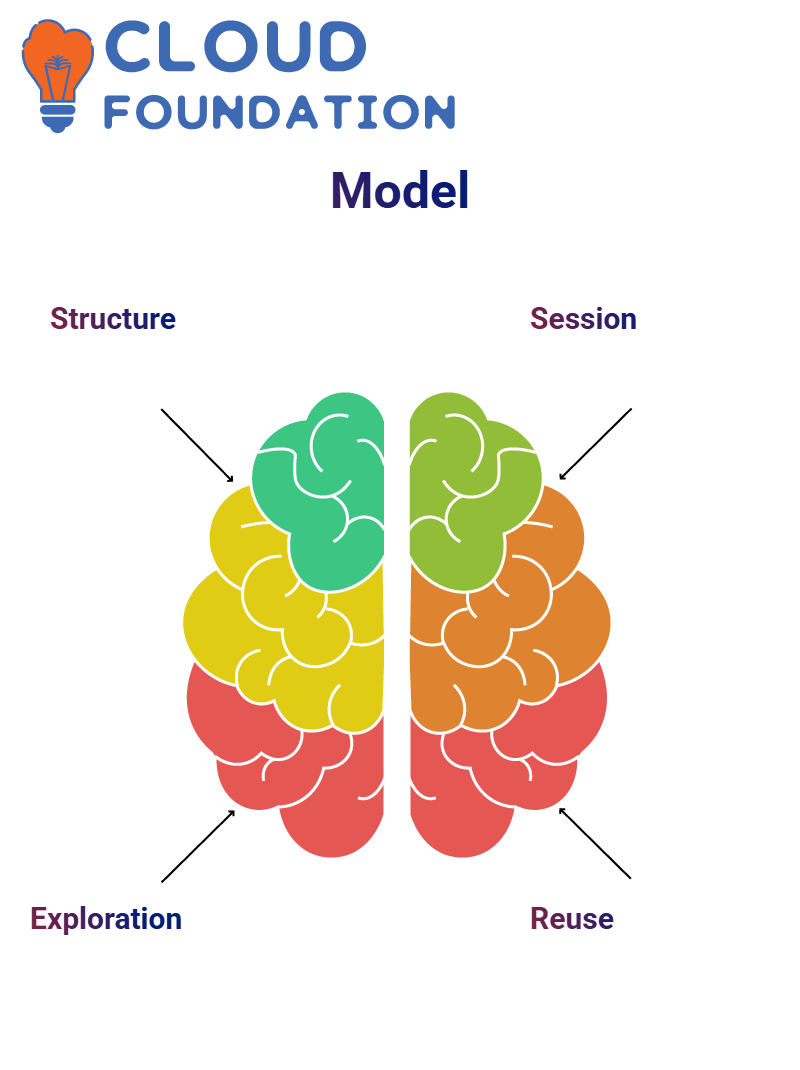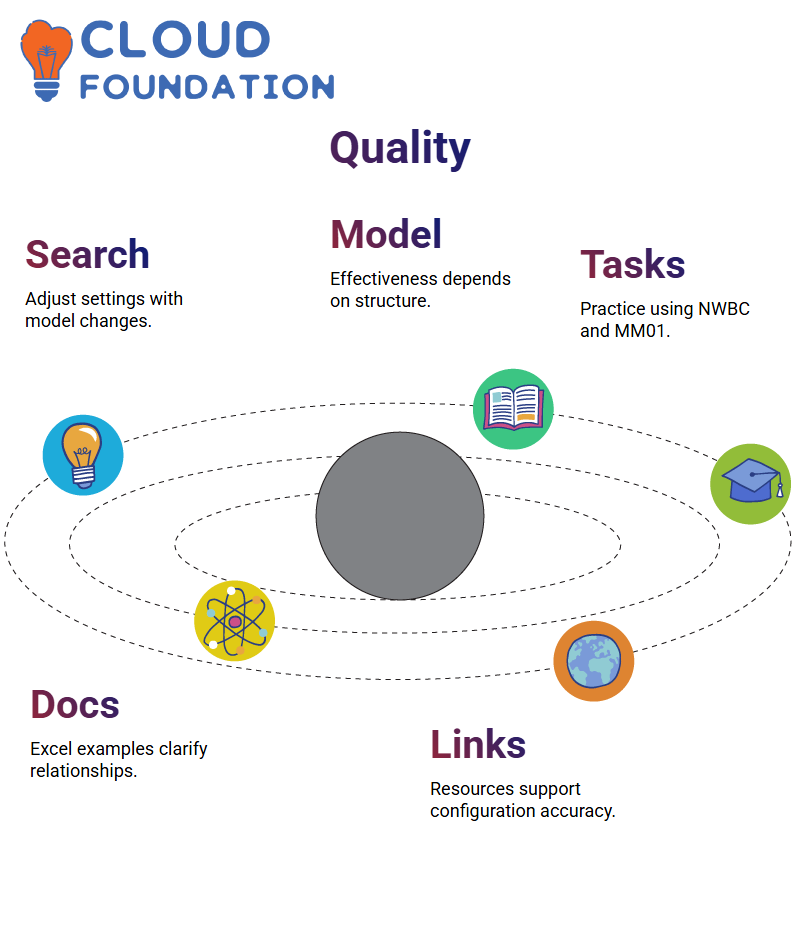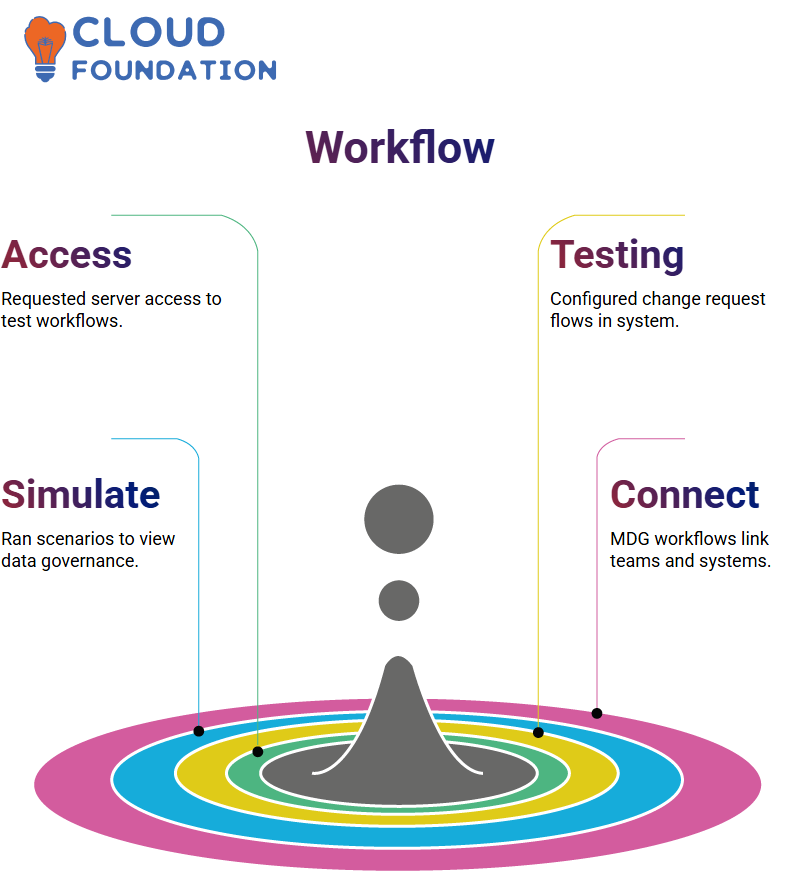SAP MDG Data Model Training
Exploring SAP MDG Attributes
As I transitioned to SAP MDG for the first time, the concept of custom attributes proved daunting, from adding fields and configuring search tools to navigating through tables without knowing where or when to look next.
After spending more time navigating the SAP MDG data model, things began to fall into place more smoothly.
I discovered that I could configure F4 help from the backend for fields such as plant or purchasing group; additionally, the system validates entries and throws errors when data isn’t correctly aligned.
My understanding of SAP MDG truly deepened as soon as I started exploring the MARC table.
It’s fascinating how plant data interweaves with material data – simply entering a plant number, such as US01, opens up endless opportunities!
By accessing the S16 table with combined plant and material numbers, I instantly got purchasing group and MRP views, an essence of how SAP MDG integrates backend validation with user inputs.
SAP MDG revealed to me how each material has different configurations across plants. Two materials could share one plant number while having entirely dissimilar MRP types and controllers; these attributes control behaviour as seen by MM03.
I’ve witnessed materials with no attributes set up displaying blank screens, while others showed active statuses simply because they were extended within their plant views.

MDG and MM03 Mapping in SAP MDG
My primary task in SAP MDG’s data model screen was examining attribute origins. One particularly insightful observation I made was that expanding material views to costing or accounting immediately reflected in MM03.
Furthermore, these views correspond with specific entities within MDG, such as MARC Basic or MARC Purchasing in MDG, which have been meticulously segregated to align with what appears in MM03.
Discovering how SAP MDG handles changes was eye-opening. Modifying purchasing group data creates a Typhoon Entity, defined by plant material combinations and stored separately to ensure that plant-level changes do not disrupt other views. I witnessed attributes, such as GR processing and MRP types, behave consistently across both UIs and data models.
“Now, when I look at the MM03 screen and see fields such as lot size, MRP type, and controller, my brain immediately knows their locations in the SAP MDG model; like an unfolded puzzle, it makes perfect sense!” SAP MDG enables me to track changes not just superficially, but also directly from its tables.
Entity modelling in SAP MDG was another eye-opener. SAP offers a streamlined approach for defining entities across user interface screens, including MRP, costing, and accounting, each with its distinct data representation within the model.
I used this structure to practice creating new materials from scratch while ensuring that all fields linked back to relevant entities.
Data Model in SAP MDG
Let’s dive in by first exploring the SAP MDG data model. When working on SAP MDG, I always start from its structure; step-by-step exploration is key in building an enduring data model foundation.

During one of our sessions, I encouraged attendees to examine the SAP MDG data model thoroughly.
Furthermore, I shared documents via email that detailed reuse definitions and pre-base steps; these resources helped participants better comprehend how SAP MDG manages master data.
Practical Tasks to Get Comfortable with SAP MDG
Learners were instructed to attempt creating material data using NWBC; if that failed, I recommended they try transaction MM01.
Gaining hands-on experience is crucial for understanding how SAP MDG supports material master creation workflows.
SAP MDG offers multiple ways to handle data management, and employing both methods can help build confidence.
Explore change request mechanisms and identify where each approach fits within the broader context.
SAP MDG Configurations
I frequently provide configuration links and documentation that guide learners in setting up key SAP MDG components, helping them better understand how their backend configuration aligns with business requirements. These resources have proven extremely helpful.
SAP MDG configurations may seem complex at first, but breaking them down piecemeal makes learning manageable.
I recommend learners familiarise themselves with each section over time rather than trying to absorb everything at once.
UI Modelling in SAP MDG
As soon as we start expanding the SAP MDG data model, we move on to user interface modelling.
It is truly intriguing to watch as different UI components assemble when customising data governance processes.
When users require changes in how they interact with SAP MDG data, UI modelling plays a key role. By adapting it for specific business scenarios, this makes the platform becomes more adaptable and user-friendly than before.

Process Modelling in SAP MDG
Next on our agenda is process modelling in SAP MDG, in which we map out validations, enrichments and the entire workflow logic.
As previously outlined, validations within SAP MDG serve to guarantee data quality before it’s officially recorded.
Enrichment helps enhance records by applying rules or utilising external sources – essential components that help ensure consistency in record-keeping.
Data Quality in SAP MDG
SAP MDG provides powerful tools for handling data quality. I ensure learners fully comprehend how search extensions connect to a data model and how best to configure these features effectively.
As part of SAP MDG search behaviours, search parameters need to be adjusted when changes to the data model are implemented.
We often discuss how to do so when addressing changes made in SAP MDG search behaviours.
This issue must always be taken seriously when discussing SAP MDG searches, as their effectiveness depends heavily on their underlying model.

SAP MDG Documentation
Before concluding our session, I assigned two exercises that are essential in reinforcing SAP MDG concepts: first, creating material using NWBC and, should that fail, using MM01. These tasks helped strengthen the understanding of MDG concepts.
As part of my promise, I shared some reference documents — specifically, Excel examples of data models — that help learners visualise and comprehend SAP MDG data structures and understand their relationships.
Getting Hands-On with SAP MDG Interview Experience
Recently, I sat down for an interview where I had the opportunity to discuss my experience working with SAP MDG.
I walked them through every stage of its implementation — from using OData services on Fiori to pull information into the SAP MDG system, to maintaining data through maintenance processes and workflows using SAP MDG.
At first, everything went smoothly until they turned the conversation to business processes and asked me questions about various SAP MDG workflows, such as make-to-stock, make-to-order, and order-to-cash, which are more applicable in real-world projects than in academic classes.
After being challenged on my knowledge about them, however, it dawned on me that SAP MDG can vary considerably by industry (such as mechanical, pharmaceutical, or manufacturing); therefore, I now plan to explore this more thoroughly.

Industry Insights with SAP MDG
As you become immersed in a project, SAP MDG begins to reveal its applications across various industries.
For instance, pharmaceutical environments impose stringent compliance and regulatory checks that must be met before manufacturing; SAP MDG ensures that product data undergoes proper validation and governance processes before being released for distribution.
Mechanical industries tend to develop products more rapidly after R&D has concluded, thanks to SAP MDG, which helps streamline workflows and manage master data efficiently.
Once we learned about how different industries implement business rules differently using SAP MDG, this difference became apparent in its entirety.
Workflow Practice in SAP MDG
Recently, I requested server access in SAP MDG so I can test some workflows. Although there was a delay in obtaining approval for access, I plan to configure and test the change request flows directly in the SAP MDG system.
With assistance from colleagues, I plan to simulate scenarios to observe how data governance unfolds and track change request flows as I proceed.

Each time I practice SAP MDG workflows, I gain a deeper appreciation for its role in connecting teams and systems.
For instance, creating change requests demonstrates how SAP MDG ensures smooth transitions between data states and approval processes.
Navigating Projects and Learning Through SAP MDG
My journey into SAP MDG started after years of career searching. While finding training and projects didn’t happen immediately after graduation, once they did, I made up my mind to devote myself entirely to becoming proficient with MDG in its entirety. In my first project, giving 100% effort every day was my mantra.
Learning SAP MDG has taught me that dedication makes a difference, particularly in today’s corporate environments, where less handholding is provided, and no handholding was offered when I was stuck or needed assistance learning SAP modules and functionalities.
When faced with frustration, I used “smart working”, combining effort with efficient knowledge acquisition of these features of the ERP.
Motivation and Focus with SAP MDG
At one point, I felt lost switching between various technologies and short-term roles, but then realised focusing exclusively on SAP MDG would be the wisest move – it is such an expansive system with diverse industry applications!
Now I am dedicated to learning all there is to know about it, from data models and business rules to workflows, all within SAP MDG.
Consistency with SAP MDG will pay off. Although progress may seem slow now, tomorrow holds many opportunities and possibilities.
I continue to learn, test, and prepare to use it meaningfully within real projects, utilising SAP MDG as part of actual solutions.

Navya Chandrika
Author



